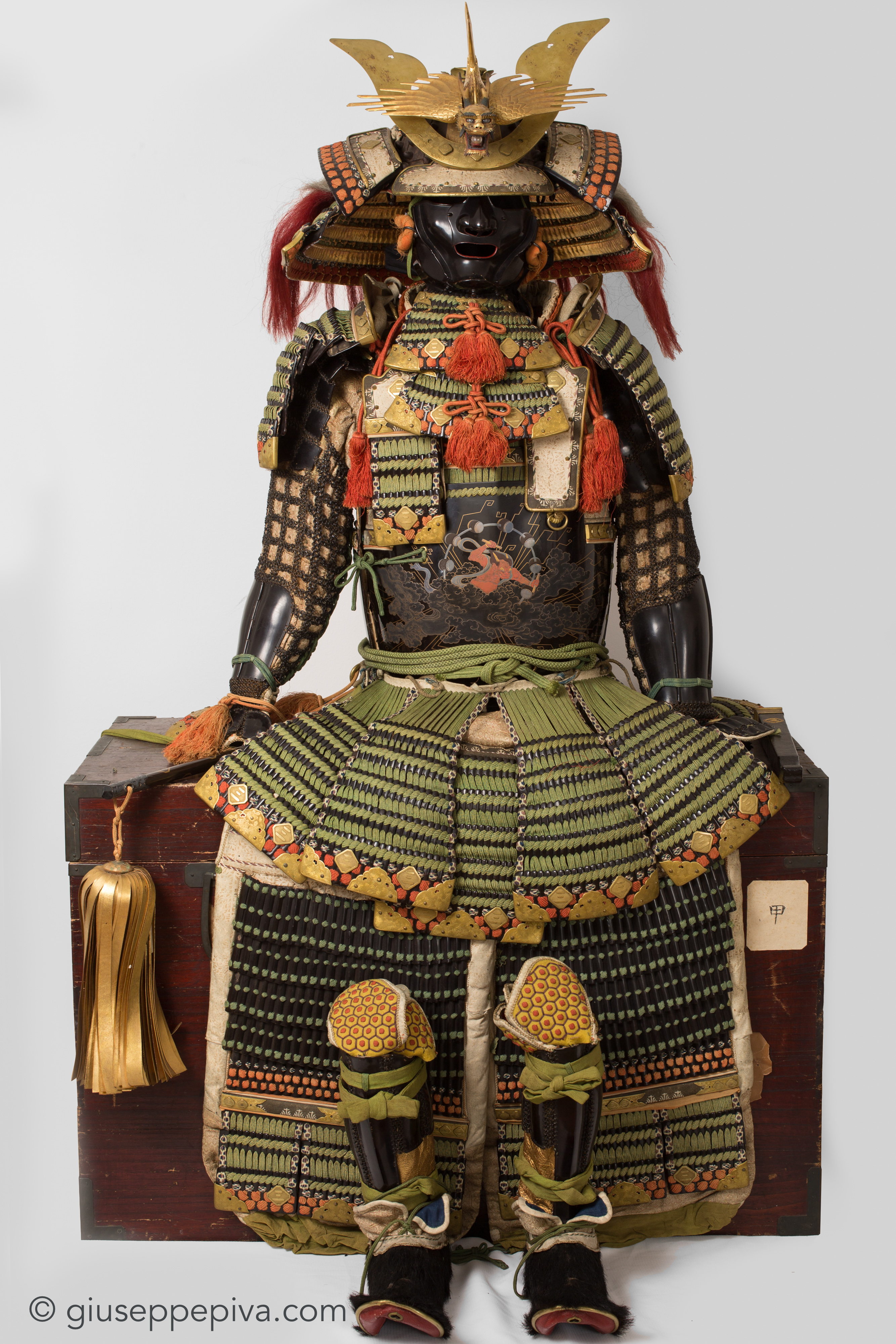History of the samurai armor: an abstract.
22 October 2020

The word samurai means "one who serves" and refers to military groups that developed around the 10th century in Japan to protect and expand their provincial domains. In 1185, after years of civil war, the warrior clan of Minamoto Yoritomo defeated its enemies, the Taira, and in 1192 the emperor appointed Yoritomo as supreme military leader, Seii Tai Shōgun (Barbarian Conquering General).
At this time, battles were mostly fought by cavalry with the bow as the main weapon, while the katana was a secondary weapon. Samurai armour evolved into the flexible ō-yoroi ("great armour"), which emphasised protection against arrows. The cuirass consisted of lamellar plates joined together in a flexible manner, with the upper portion consisting of a solid plate that provided increased protection. The front of the cuirass was covered in leather to prevent the bowstring from snagging on the plates. Two large shoulder pieces fell into place when the arms were raised, protecting the exposed forearm area from bows; two smaller plates on the chest protected the armour attachments; the skirt also consisted of interconnected flexible plates that protected the thighs and lower abdomen. The arms of the samurai were protected by long chainmail gauntlets with solid plates attached for better defence. Helmets (kabuto) were formed of iron plates riveted together vertically. The sides had interconnected rows of flexible lamellae protecting the neck and shoulders.
After the Mongol invasion attempts in the 14th century, warfare shifted from cavalry to masses of foot soldiers, so armour styles changed and became lighter and more flexible. The development of samurai armour continued along this path in the 16th century, when large armies were deployed during the "Period of Warring States," fighting with spears and firearms.
Finally, when Japan was at peace from about 1615, armour was used for ceremonial occasions and for the regular obligatory processions from the regional domain of a daimyō to the capital, Edo. These processions were an opportunity for a daimyō to show personal taste and were recognised as an outward sign of his status. Most of the armor produced at this time was made for parade purposes. They were often repurposed from armor of earlier periods to be both decorative and effective.
Copyright © 2016 - giuseppe piva - VAT: 05104180962

